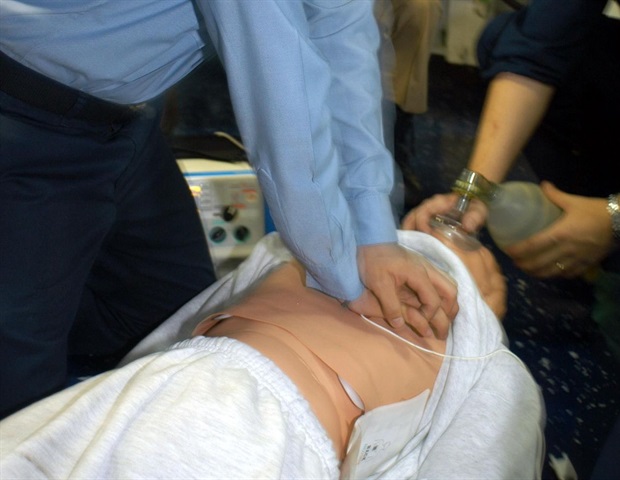In a recent study published in The Lancet Regional Health – Europe, a group of researchers identified subpopulations at heightened risk for ST-elevation myocardial infarction (STEMI) and non-ST-elevation myocardial infarction (NSTEMI) due to air pollution in Poland.
 Study: Effect of air pollution exposure on risk of acute coronary syndromes in Poland: a nationwide population-based study (EP-PARTICLES study). Image Credit: khunkornStudio/Shutterstock.com
Study: Effect of air pollution exposure on risk of acute coronary syndromes in Poland: a nationwide population-based study (EP-PARTICLES study). Image Credit: khunkornStudio/Shutterstock.com
Background
Cardiovascular diseases (CVD) pose significant global health, economic, and social challenges. In 2021, CVD caused 1.7 million deaths and 1.3 million lost working years in the European Union. Ischemic heart disease, primarily due to coronary artery disease (CAD), led to 34% of these deaths.
CAD can escalate to acute coronary syndromes (ACS), such as life-threatening STEMI and NSTEMI.
Further research is needed to understand better the specific mechanisms by which air pollution contributes to ACS and to identify effective interventions for vulnerable populations.
About the study
The present study centers on the eastern region of Poland and includes over eight million people distributed across five voivodeships, 101 counties, and 709 communities, predominantly rural. Hospitalization data from 2011 to 2020, including NSTEMI and STEMI cases, were sourced from the National Health Fund of Poland.
No repeat patient occurrences were noted due to unique patient codes. Air pollution data was gathered using the Global Environmental Multiscale–Air Quality (GEM-AQ) model in collaboration with the Institute of Environmental Protection- National Research Institute.
This model, a detailed chemical transport system, predicts air quality on various scales and integrates comprehensive atmospheric chemical and physical processes.
Meteorological information like temperature, humidity, and pressure was accurately collected from the Institute of Meteorology and Water Management. The statistical analysis involved a series of tests to assess data distribution and comparative analyses, using the Shapiro-Wilk and t-tests, among others.
The study also incorporated quasi-Poisson generalized additive models to estimate the community-specific associations of air pollution with incidence of STEMI and NSTEMI, adjusting for potential confounders like holidays and epidemics.
Further, a random-effects meta-analysis pooled these community-specific estimates. The effect of pollution was quantified as changes in the incidence of STEMI and NSTEMI, as well as specific increases in pollutants like particulate matter (PM2.5) and nitrogen dioxide (NO2).
Study results
During the study period, the data revealed 63,154 hospitalizations and 5,921 in-hospital deaths (9.4%) from STEMI and 76,543 hospitalizations with 4,079 (5%) in-hospital deaths due to NSTEMI.
The majority of STEMI patients were male (64.3%) with an average age of 67.5 years, while the NSTEMI group was also predominantly male (62%) with an average age of 70.2 years. The standardized hospitalization rates (SHR) showed a significant declining trend for STEMI and a non-significant increase for NSTEMI over the years.
Despite a general decrease in air pollutant concentrations in both rural and urban areas, levels remained above World Health Organisation (WHO) and European Environment Agency thresholds. A correlation analysis demonstrated a moderate to strong association between various pollutants, particularly PM2.5 and sulfur dioxide (SO2).
The impact of air pollution on hospitalizations was significant. Increases in PM2.5 and benzo(a)pyrene (BaP) concentrations were linked to a higher risk of hospitalizations for both STEMI and NSTEMI.
The effects of NO2 and SO2 were more pronounced in the short- and mid-term for the STEMI group, whereas the NSTEMI group only exhibited a mid-term effect. Notably, the influence of BaP on STEMI was significant in single-pollutant models but lost significance when adjusted for PM2.5.
Age-stratified analyses showed that younger patients (under 65) faced a significant risk increase for NSTEMI with elevated NO2 and PM2.5 levels, while older patients experienced increased STEMI hospitalizations linked to SO2 and PM2.5.
Women were particularly vulnerable to STEMI associated with PM2.5 and BaP, showing higher risks compared to men.
Rural areas displayed a higher susceptibility to hospitalizations from STEMI when exposed to increases in SO2, PM2.5, and BaP. Economic disparities also influenced health outcomes; lower-income regions saw a 1.4% increase in NSTEMI hospitalizations with a rise in BaP levels.
The analysis further incorporated traditional risk factors such as smoking, hypertension, and diabetes. Areas with higher rates of these conditions showed a greater detrimental effect from SO2, PM2.5, and NO2 on STEMI occurrences.
However, the impact of BaP was inversely related to the prevalence of tobacco usage, indicating more pronounced effects in less smoking-prevalent areas.
Lastly, reducing air pollution to WHO-recommended levels could significantly decrease hospitalizations. Estimates showed that adhering to these standards could prevent thousands of NSTEMI and STEMI cases annually, underscoring the critical public health impact of managing air quality.







